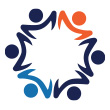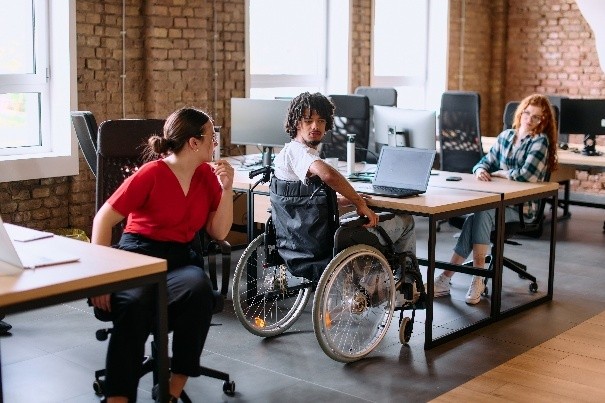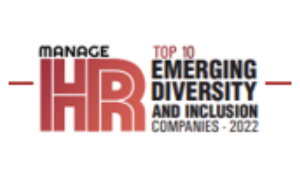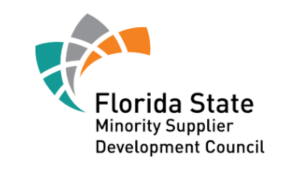Today’s corporate workplace may be the first to include five different generations working side by side toward shared economic and commercial goals. For business owners and corporate executives, managing multiple generations in the workplace may be challenging to some. Each defined generation can have different expectations, communication styles, and perspectives. Nevertheless, adopting a management strategy that addresses the distinctive characteristics of different generations in the workplace can allow employers to harness the respective strengths of their workforce and better create a competitive advantage.
What is the Generational Gap in the Workplace?
The generational gap in the workplace is, broadly speaking, the difference in behavior and outlook between groups of people who were born at distinctly different times. Each generation grows up in a different context and, as a result, may have different work expectations. For instance, members of the Traditionalist generation are typically depicted as being very fiscally conservative, while baby boomers may show more liberal fiscal tendencies. Gen Zers are heavily tech-reliant and comfortable using social media platforms, while older generations may prefer other forms of communication.
By 2024, about 25% of the workforce is projected to be over the age of 55. That compares to only about 12 percent of the workforce in 1994. In fact, in some workplaces, 55 doesn’t even begin to signify time to retire. Those in their 60s, 70s, and even 80s also are deciding to stay in place either full time or part time. This trend has resulted in a new phenomenon: more generations in the workplace. In fact, today, many workplaces are composed of five generations:
- Traditionalists—born before 1946
- Baby Boomers—born between 1946 and 1964
- Generation X—born between 1965 and 1976
- Generation Y, or Millennials—born between 1977 and 1997
- Generation Z—born after 1997
Ageism — the “Last Acceptable Bias” — is Rampant at Work, AARP says:
Employers often have negative attitudes towards older workers. Age discrimination persists even though Traditionalists and Baby Boomers are not necessarily less healthy, less educated, less talented, or productive than their younger team members. Older women face particular challenges in employment because of their sex and age. Strategies to combat ageism can increase opportunities for intergenerational teams and their value propositions for the business.
Ageism at work is widespread, tolerated and viewed as the “last acceptable bias,” according to an AARP investigation, the organization announced Dec. 30, 2019.
The research found that age bias occurs in three basic areas:
- Hiring, whereby employers target younger applicants job ad language
- On-the-job situations, in which older workers are harassed and prevented from advancing due to misperceptions about their tech skills; and
- Firing, whereby older workers are targeted for dismissals because of false perceptions about their pay levels and contributions
The report also found that large employers often tolerate age bias because the laws that protect older workers are “decidedly weaker” than those prohibiting other forms of discrimination.
Ageism Risks of Age Discrimination
Pervasive ageism is putting companies in the crosshairs of regulators and fueling high turnover in an already tight labor market.
The American workforce is graying. The fastest annual growth rates will be among those workers who are aged 65 and older, according to the U.S. Bureau of Labor Statistics.
Employees may benefit from the experience of workers who have “seen it all” from economic ups and downs to the evolution of technology. For Traditionalists and Baby Boomer employees, it means a longer career of meaningful work and the challenges and rewards that accompany it. It may also mean more discrimination based on age, and the risks that entails.
How Can We Combat Ageism?
Tackling ageism will requires a new understanding of ageing by all generations. This understanding needs to counter outdated concepts of older people as burdens and acknowledge the wide diversity of the experience of older age, the inequities of ageism, and demonstrate a willingness to ask how a workplace might organize itself better.
Charlotte Hughes, Co-founder and CEO of Inclusive Leaders Group who provides client training and consultations to prevent ageism and advance generational inclusion, recommends these essential steps to take:
- Organizational Cultural Assessment. Take advantage of specialized assessments to evaluate your organization’s culture, practices, and policies as they relate to older workers.
- Evaluate the Potential for Bias Within your Organization. Various types of unconscious bias, including perception or in-group bias, may be adversely impacting the employment decisions made by your organization.
- Ageism and Age Discrimination Training. Virtual facilitator-led training designed to help change the common negative misconceptions and myths about aging by replacing them with facts that should be common knowledge. The training will support factual conversations about aging and spark widespread use of positive aging-related language among employees.
- Put EEOC Policies in Place and Enforce Them. Compliance best practices
- Reward Based on Performance, Not Tenure. Pay equity and pay for performance
I asked Charlotte where in most companies’ talent management processes are, they are most at risk of ageism leading to potentially costly age discrimination and she indicated that the red flags involve the Hiring/Interview Process and Approaching Layoffs Based on Age or Pay.
Navigating a Multigenerational Workplace
The best way to avoid age discrimination is to embrace a multigenerational workforce. That means recognizing that all your employees, no matter their age, can contribute to your organization’s success. In addition, it means creating a culture that welcomes employees and recognizes the unique strengths they bring to the table-and that includes their age.
Charlotte and the Inclusive Leaders Group Consulting Team provide consultation and training with the Navigating the Multigenerational Workplace virtual keynotes and workshops. The learning experience explores how and why we interact and define each other through the lens of our birth year. Participants discover how different generations experience the workplace, learn how our own experiences may influence our interactions and consider ways to reduce the impact of bias in the workplace based on age or generation. The virtual suite of ILG workshops includes Generational Inclusion, The GenZ Employer of Choice Handbook, Avoiding Workplace Ageism, and other custom Multigenerational Workplace programs.
Contact us to discuss strategies and initiatives to more effectively manage your Generational Talent.
 Brian L. Hughes is Co-founder and Chief Strategy Officer of Inclusive Leaders Group, LLC, and focuses on expanding the firm’s offerings by delivering thought leadership and developing proprietary content, and he keeps the consulting team abreast of industry insights and trends. In addition, he is co-host of The INCLUSIVE ENTERPRISE Podcast that features transformational interviews as well as actionable tips and strategies that corporate leaders can implement in their workplaces and careers, to drive profitable growth through diversity, equity, inclusion, and belonging.
Brian L. Hughes is Co-founder and Chief Strategy Officer of Inclusive Leaders Group, LLC, and focuses on expanding the firm’s offerings by delivering thought leadership and developing proprietary content, and he keeps the consulting team abreast of industry insights and trends. In addition, he is co-host of The INCLUSIVE ENTERPRISE Podcast that features transformational interviews as well as actionable tips and strategies that corporate leaders can implement in their workplaces and careers, to drive profitable growth through diversity, equity, inclusion, and belonging.








